-
EXECUTIVE’S HANDBOOK
-
The Top Performing Segments
-
Key Trends Summarized
-
Pricing Outlook
-
Strategic Insights
-
Who are the Key Players in the Market?
-
MARKET INTRODUCTION
-
Definition
-
Report Segmentation & Scope
-
Regional & Country Level Coverage
-
Why you need this report?
-
RESEARCH METHODOLOGY
-
Research Process
-
Secondary Research
- Data Mining & Condensation
- Sources (Associations, Organizations, Magazines, Paid Databases)
-
Primary Research
- Sample Size (Demand-Supply, Company Type, Designations, Region)
- Sources
-
Factorial Analysis & Approach Setting
-
Estimation & Forecast Models
-
Pricing Baskets
-
Analyst Hours & Team
-
MARKET DYNAMICS
-
Introduction
-
Growth Parameters Mapped - Drivers
- Drivers 1
- Drivers 2
-
What are the challenges faced by Industry Participants?
- Restraints
-
Opportunities
- Opportunity 1
- Opportunity 2
-
Impact Analysis of COVID-19
- Impact on Overall Industry
- Impact on Global Flat Roofing Systems Market
- Impact on Supply Chain of Flat Roofing Systems
- Impact on Market Demand of Flat Roofing Systems
- Impact on Pricing of Flat Roofing Systems
-
MARKET FACTOR ANALYSIS
-
Supply/Value Chain Analysis
- Participants
- Value Percolation Across the Chain
- Integration Levels
- Key Issues Addressed
-
Porter’s Five Forces Model
- Bargaining Power of Suppliers
- Bargaining Power of Buyers
- Threat of New Entrants
- Threat of Substitutes
- Intensity of Rivalry
-
GLOBAL FLAT ROOFING SYSTEMS MARKET, BY APPLICATION (VALUE)
-
Introduction
-
Commercial
-
Residential
-
Industrial
-
GLOBAL FLAT ROOFING SYSTEMS MARKET, BY MATERIAL TYPE (VALUE)
-
Introduction
-
Bitumen
-
Thermoplastic Olefin (TPO)
-
EPDM Rubber
-
PVC Membrane
-
Metals
-
Others
-
GLOBAL FLAT ROOFING SYSTEMS MARKET, BY CONSTRUCTION TYPE (VALUE)
-
Introduction
-
New Construction
-
Reconstruction/Remodeling
-
GLOBAL FLAT ROOFING SYSTEMS MARKET, BY REGION (VALUE)
-
Introduction
-
North America
- US
- Canada
- Mexico
-
Europe
- Germany
- France
- UK
- Spain
- Rest of Europe
-
Asia-Pacific
- China
- India
- Japan
- South Korea
- Rest of Asia-Pacific
-
Middle East & Africa
- Saudi Arabia
- UAE
- South Africa
- Rest of Middle East & Africa
-
South America
- Argentina
- Brazil
- Rest of South America
-
COMPETITIVE LANDSCAPE
-
Introduction
-
Competition Dashboard
-
Company Market Share Analysis, 2023
-
Who are the market disruptors & innovators?
-
What strategies are being adopted by market leaders?
-
Competitive Benchmarking
-
The Leading Player in terms of Number of Developments in the Global Flat Roofing Systems Market
-
List of Key Players, By Region
-
Public Players Stock Summary
-
Comparative Analysis: Key Players Financial
-
Key Developments & Growth Strategies
- New Product Launch/Service Deployment
- Merger & Acquisition
- Joint Ventures
-
COMPANY PROFILES
-
GAF Materials Corporation
- Company Overview
- Financial Overview
- Product Offered
- Key Developments
- SWOT Analysis
- Key Strategies
-
DuPont
-
Saint-Gobain
-
Sika AG
-
Beijing Oriental YuhongWaterproof Technology Co., Ltd
-
Fosroc
-
Carlisle Companies Incorporated
-
SOPREMA S.A.S.
-
IKO Industries Ltd
-
3M Company
-
RECOMMENDATIONS & EXPERT INSIGHTS
-
What is the short-term vs long-term outlook for the Market?
-
Who are the players to look out for?
-
What will the product mix look in coming years?
-
MRFR OFFERINGS & TEAM
-
Citations & Media
-
Our Regional Representatives
-
Related Reports
-
Our Domain Coverage
-
NOTE:
-
This table of content is tentative and subject to change as the research progresses.
-
In section 11, only the top companies will be profiled. Each company will be profiled based on the Market Overview, Financials, Product Portfolio, Business Strategies, and Recent Developments parameters.
-
Please note: The financial details of the company cannot be provided if the information is not available in the public domain and or from reliable sources.
-
LIST OF TABLES
-
QFD MODELING FOR MARKET SHARE ASSESSMENT
-
GLOBAL FLAT ROOFING SYSTEMS MARKET, BY APPLICATION, 2019-2032 (USD BILLION)
-
GLOBAL FLAT ROOFING SYSTEMS MARKET, BY MATERIAL TYPE, 2019-2032 (USD BILLION)
-
GLOBAL FLAT ROOFING SYSTEMS MARKET, BY CONSTRUCTION TYPE, 2019-2032 (USD BILLION)
-
GLOBAL FLAT ROOFING SYSTEMS MARKET, BY REGION, 2019-2032 (USD BILLION)
-
NORTH AMERICA FLAT ROOFING SYSTEMS MARKET, BY COUNTRY, 2019-2032 (USD BILLION)
-
NORTH AMERICA FLAT ROOFING SYSTEMS MARKET, BY APPLICATION, 2019-2032 (USD BILLION)
-
NORTH AMERICA FLAT ROOFING SYSTEMS MARKET, BY MATERIAL TYPE, 2019-2032 (USD BILLION)
-
NORTH AMERICA FLAT ROOFING SYSTEMS MARKET, BY CONSTRUCTION TYPE, 2019-2032 (USD BILLION)
-
US FLAT ROOFING SYSTEMS MARKET, BY APPLICATION, 2019-2032 (USD BILLION)
-
US FLAT ROOFING SYSTEMS MARKET, BY MATERIAL TYPE, 2019-2032 (USD BILLION)
-
US FLAT ROOFING SYSTEMS MARKET, BY CONSTRUCTION TYPE, 2019-2032 (USD BILLION)
-
CANADA FLAT ROOFING SYSTEMS MARKET, BY PRODUCT TYPE, 2019-2032 (USD BILLION)
-
CANADA FLAT ROOFING SYSTEMS MARKET, BY MATERIAL TYPE, 2019-2032 (USD BILLION)
-
CANADA FLAT ROOFING SYSTEMS MARKET, BY CONSTRUCTION TYPE, 2019-2032 (USD BILLION)
-
MEXICO FLAT ROOFING SYSTEMS MARKET, BY APPLICATION, 2019-2032 (USD BILLION)
-
MEXICO FLAT ROOFING SYSTEMS MARKET, BY MATERIAL TYPE, 2019-2032 (USD BILLION)
-
MEXICO FLAT ROOFING SYSTEMS MARKET, BY CONSTRUCTION TYPE, 2019-2032 (USD BILLION)
-
EUROPE FLAT ROOFING SYSTEMS MARKET, BY COUNTRY, 2019-2032 (USD BILLION)
-
EUROPE FLAT ROOFING SYSTEMS MARKET, BY APPLICATION, 2019-2032 (USD BILLION)
-
EUROPE FLAT ROOFING SYSTEMS MARKET, BY MATERIAL TYPE, 2019-2032 (USD BILLION)
-
EUROPE FLAT ROOFING SYSTEMS MARKET, BY CONSTRUCTION TYPE, 2019-2032 (USD BILLION)
-
GERMANY FLAT ROOFING SYSTEMS MARKET, BY APPLICATION, 2019-2032 (USD BILLION)
-
GERMANY FLAT ROOFING SYSTEMS MARKET, BY MATERIAL TYPE, 2019-2032 (USD BILLION)
-
GERMANY FLAT ROOFING SYSTEMS MARKET, BY CONTRUCTIION TYPE, 2019-2032 (USD BILLION)
-
UK FLAT ROOFING SYSTEMS MARKET, BY APPLICATION, 2019-2032 (USD BILLION)
-
UK FLAT ROOFING SYSTEMS MARKET, BY MATERIAL TYPE, 2019-2032 (USD BILLION)
-
UK FLAT ROOFING SYSTEMS MARKET, BY CONSTRUCTION TYPE, 2019-2032 (USD BILLION)
-
FRANCE FLAT ROOFING SYSTEMS MARKET, BY APPLICATION, 2019-2032 (USD BILLION)
-
FRANCE FLAT ROOFING SYSTEMS MARKET, BY MATERIAL TYPE, 2019-2032 (USD BILLION)
-
FRANCE FLAT ROOFING SYSTEMS MARKET, BY CONSTRUCTION TYPE, 2019-2032 (USD BILLION)
-
SPAIN FLAT ROOFING SYSTEMS MARKET, BY APPLICATION, 2019-2032 (USD BILLION)
-
SPAIN FLAT ROOFING SYSTEMS MARKET, BY MATERIAL TYPE, 2019-2032 (USD BILLION)
-
SPAIN FLAT ROOFING SYSTEMS MARKET, BY CONSTRUCTION TYPE, 2019-2032 (USD BILLION)
-
ITALY FLAT ROOFING SYSTEMS MARKET, BY APPLICATION, 2019-2032 (USD BILLION)
-
ITALY FLAT ROOFING SYSTEMS MARKET, BY MATERIAL TYPE, 2019-2032 (USD BILLION)
-
ITALY FLAT ROOFING SYSTEMS MARKET, BY DISTRIBUTION CHANNEL, 2019-2032 (USD BILLION)
-
RUSSIA FLAT ROOFING SYSTEMS MARKET, BY APPLICATION, 2019-2032 (USD BILLION)
-
RUSSIA FLAT ROOFING SYSTEMS MARKET, BY MATERIAL TYPE, 2019-2032 (USD BILLION)
-
RUSSIA FLAT ROOFING SYSTEMS MARKET, BY CONSTRUCTION TYPE, 2019-2032 (USD BILLION)
-
SWEDEN FLAT ROOFING SYSTEMS MARKET, BY APPLICATION, 2019-2032 (USD BILLION)
-
SWEDEN FLAT ROOFING SYSTEMS MARKET, BY MATERIAL TYPE, 2019-2032 (USD BILLION)
-
SWEDEN FLAT ROOFING SYSTEMS MARKET, BY CONSTRUCTION TYPE, 2019-2032 (USD BILLION)
-
POLAND FLAT ROOFING SYSTEMS MARKET, BY APPLICATION, 2019-2032 (USD BILLION)
-
POLAND FLAT ROOFING SYSTEMS MARKET, BY MATERIAL TYPE, 2019-2032 (USD BILLION)
-
POLAND FLAT ROOFING SYSTEMS MARKET, BY CONSTRUCTION TYPE, 2019-2032 (USD BILLION)
-
REST OF EUROPE FLAT ROOFING SYSTEMS MARKET, BY APPLICATION, 2019-2032 (USD BILLION)
-
REST OF EUROPE FLAT ROOFING SYSTEMS MARKET, BY MATERIAL TYPE, 2019-2032 (USD BILLION)
-
REST OF EUROPE FLAT ROOFING SYSTEMS MARKET, BY CONSTRUCTION TYPE, 2019-2032 (USD BILLION)
-
ASIA PACIFIC FLAT ROOFING SYSTEMS MARKET, BY COUNTRY, 2019-2032 (USD BILLION)
-
ASIA PACIFIC FLAT ROOFING SYSTEMS MARKET, BY APPLICATION, 2019-2032 (USD BILLION)
-
ASIA PACIFIC FLAT ROOFING SYSTEMS MARKET, BY MATERIAL TYPE, 2019-2032 (USD BILLION)
-
ASIA PACIFIC FLAT ROOFING SYSTEMS MARKET, BY CONSTRUCTION TYPE, 2019-2032 (USD BILLION)
-
CHINA FLAT ROOFING SYSTEMS MARKET, BY APPLICATION, 2019-2032 (USD BILLION)
-
CHINA FLAT ROOFING SYSTEMS MARKET, BY PRICE RANGE, 2019-2032 (USD BILLION)
-
CHINA FLAT ROOFING SYSTEMS MARKET, BY DISTRIBUTION CHANNEL, 2019-2032 (USD BILLION)
-
JAPAN FLAT ROOFING SYSTEMS MARKET, BY APPLICATION, 2019-2032 (USD BILLION)
-
JAPAN FLAT ROOFING SYSTEMS MARKET, BY MATERIAL TYPE, 2019-2032 (USD BILLION)
-
JAPAN FLAT ROOFING SYSTEMS MARKET, BY DISTRIBUTION CHANNEL, 2019-2032 (USD BILLION)
-
INDIA FLAT ROOFING SYSTEMS MARKET, BY APPLICATION, 2019-2032 (USD BILLION)
-
INDIA FLAT ROOFING SYSTEMS MARKET, BY MATERIAL TYPE, 2019-2032 (USD BILLION)
-
JAPAN FLAT ROOFING SYSTEMS MARKET, BY CONSTRUCTION TYPE, 2019-2032 (USD BILLION)
-
AUSTRALIA AND NEWZEALAND FLAT ROOFING SYSTEMS MARKET, BY APPLICATION, 2019-2032 (USD BILLION)
-
AUSTRALIA AND NEWZEALAND FLAT ROOFING SYSTEMS MARKET, BY MATERIAL TYPE, 2019-2032 (USD BILLION)
-
AUSTRALIA AND NEWZEALAND FLAT ROOFING SYSTEMS MARKET, BY CONSTRUCTION TYPE, 2019-2032 (USD BILLION)
-
SOUTH KOREA FLAT ROOFING SYSTEMS MARKET, BY APPLICATION, 2019-2032 (USD BILLION)
-
SOUTH KOREA FLAT ROOFING SYSTEMS MARKET, BY MATERIAL TYPE, 2019-2032 (USD BILLION)
-
SOUTH KOREA FLAT ROOFING SYSTEMS MARKET, BY CONSTRUCTION TYPE, 2019-2032 (USD BILLION)
-
REST OF ASIA PACIFIC FLAT ROOFING SYSTEMS MARKET, BY APPLICATION, 2019-2032 (USD BILLION)
-
REST OF ASIA PACIFIC FLAT ROOFING SYSTEMS MARKET, BY MATERIAL TYPE, 2019-2032 (USD BILLION)
-
REST OF ASIA PACIFIC FLAT ROOFING SYSTEMS MARKET, BY DISTRIBUTION CHANNEL, 2019-2032 (USD BILLION)
-
LATIN AMERICA FLAT ROOFING SYSTEMS MARKET, BY COUNTRY, 2019-2032 (USD BILLION)
-
LATIN AMERICA FLAT ROOFING SYSTEMS MARKET, BY PRODUCT TYPE, 2019-2032 (USD BILLION)
-
LATIN AMERICA FLAT ROOFING SYSTEMS MARKET, BY PRICE RANGE, 2019-2032 (USD BILLION)
-
LATIN AMERICA FLAT ROOFING SYSTEMS MARKET, BY DISTRIBUTION CHANNEL, 2019-2032 (USD BILLION)
-
BRAZIL FLAT ROOFING SYSTEMS MARKET, BY APPLICATION, 2019-2032 (USD BILLION)
-
BRAZIL FLAT ROOFING SYSTEMS MARKET, BY MATERIAL TYPE, 2019-2032 (USD BILLION)
-
BRAZIL FLAT ROOFING SYSTEMS MARKET, BY CONSTRUCTION TYPE, 2019-2032 (USD BILLION)
-
ARGENTINA FLAT ROOFING SYSTEMS MARKET, BY APPLICATION, 2019-2032 (USD BILLION)
-
ARGENTINA FLAT ROOFING SYSTEMS MARKET, BY MATERIAL TYPE, 2019-2032 (USD BILLION)
-
ARGENTINA FLAT ROOFING SYSTEMS MARKET, BY CONSTRUCTION TYPE, 2019-2032 (USD BILLION)
-
PERU FLAT ROOFING SYSTEMS MARKET, BY APPLICATION, 2019-2032 (USD BILLION)
-
PERU FLAT ROOFING SYSTEMS MARKET, BY MATERIAL TYPE, 2019-2032 (USD BILLION)
-
PERU FLAT ROOFING SYSTEMS MARKET, BY CONSTRUCTION TYPE, 2019-2032 (USD BILLION)
-
CHILE FLAT ROOFING SYSTEMS MARKET, BY APPLICATION, 2019-2032 (USD BILLION)
-
CHILE FLAT ROOFING SYSTEMS MARKET, BY MATERIAL TYPE, 2019-2032 (USD BILLION)
-
CHILE FLAT ROOFING SYSTEMS MARKET, BY CONSTRUCTION TYPE, 2019-2032 (USD BILLION)
-
COLUMBIA FLAT ROOFING SYSTEMS MARKET, BY APPLICATION, 2019-2032 (USD BILLION)
-
COLUMBIA FLAT ROOFING SYSTEMS MARKET, BY MATERIAL TYPE, 2019-2032 (USD BILLION)
-
COLUMBIA FLAT ROOFING SYSTEMS MARKET, BY CONSTRUCTION TYPE, 2019-2032 (USD BILLION)
-
REST OF LATIN AMERICA FLAT ROOFING SYSTEMS MARKET, BY APPLICATION, 2019-2032 (USD BILLION)
-
REST OF LATIN AMERICA FLAT ROOFING SYSTEMS MARKET, BY MATERIAL TYPE, 2019-2032 (USD BILLION)
-
REST OF LATIN AMERICA FLAT ROOFING SYSTEMS MARKET, BY CONSTRUCTION TYPE, 2019-2032 (USD BILLION)
-
MEA FLAT ROOFING SYSTEMS MARKET, BY COUNTRY, 2019-2032 (USD BILLION)
-
MEA FLAT ROOFING SYSTEMS MARKET, BY APPLICATION, 2019-2032 (USD BILLION)
-
MEA FLAT ROOFING SYSTEMS MARKET, BY MATERIAL TYPE, 2019-2032 (USD BILLION)
-
MEA FLAT ROOFING SYSTEMS MARKET, BY CONSTRUCTION TYPE, 2019-2032 (USD BILLION)
-
UAE FLAT ROOFING SYSTEMS MARKET, BY APPLICATION, 2019-2032 (USD BILLION)
-
UAE FLAT ROOFING SYSTEMS MARKET, BY MATERIAL TYPE, 2019-2032 (USD BILLION)
-
UAE FLAT ROOFING SYSTEMS MARKET, BY CONSTRUCTION TYPE, 2019-2032 (USD BILLION)
-
SAUDI ARABIA FLAT ROOFING SYSTEMS MARKET, BY APPLICATION, 2019-2032 (USD BILLION)
-
SAUDI ARABIA FLAT ROOFING SYSTEMS MARKET, BY MATERIAL TYPE, 2019-2032 (USD BILLION)
-
SAUDI ARABIA FLAT ROOFING SYSTEMS MARKET, BY CONSTRUCTION TYPE, 2019-2032 (USD BILLION)
-
TURKEY FLAT ROOFING SYSTEMS MARKET, BY APPLICATION, 2019-2032 (USD BILLION)
-
TURKEY FLAT ROOFING SYSTEMS MARKET, BY MATERIAL TYPE, 2019-2032 (USD BILLION)
-
TURKEY FLAT ROOFING SYSTEMS MARKET, BY CONSTRUCTION TYPE, 2019-2032 (USD BILLION)
-
OMAN FLAT ROOFING SYSTEMS MARKET, BY APPLICATION, 2019-2032 (USD BILLION)
-
OMAN FLAT ROOFING SYSTEMS MARKET, BY MATERIAL TYPE, 2019-2032 (USD BILLION)
-
OMAN FLAT ROOFING SYSTEMS MARKET, BY CONSTRUCTION TYPE, 2019-2032 (USD BILLION)
-
SOUTH AFRICA FLAT ROOFING SYSTEMS MARKET, BY APPLICATION, 2019-2032 (USD BILLION)
-
SOUTH AFRICA FLAT ROOFING SYSTEMS MARKET, BY MATERIAL TYPE, 2019-2032 (USD BILLION)
-
SOUTH AFRICA FLAT ROOFING SYSTEMS MARKET, BY CONSTRUCTION TYPE, 2019-2032 (USD

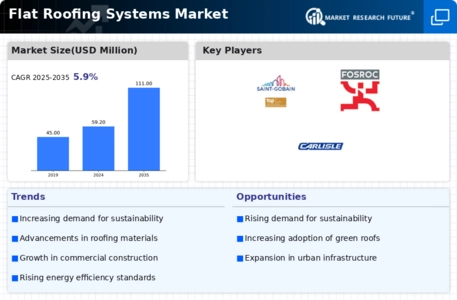
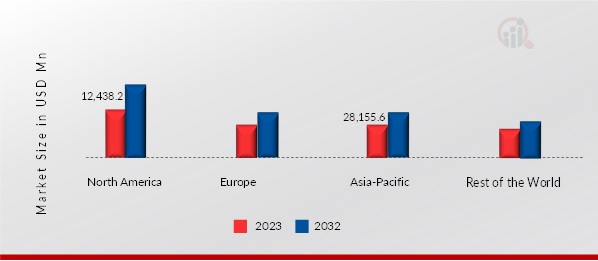
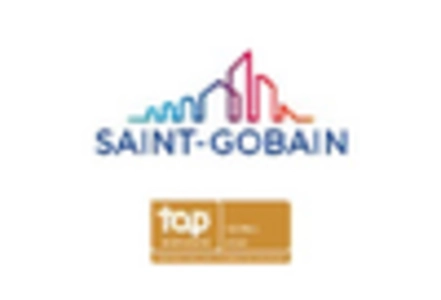
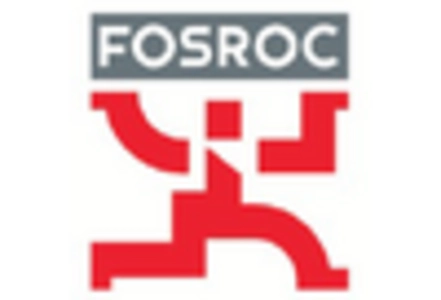
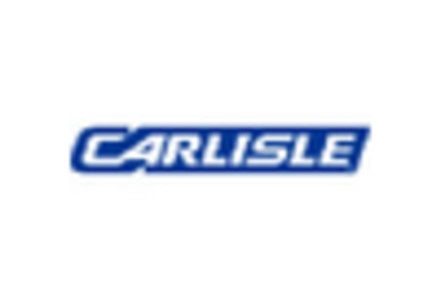

Leave a Comment